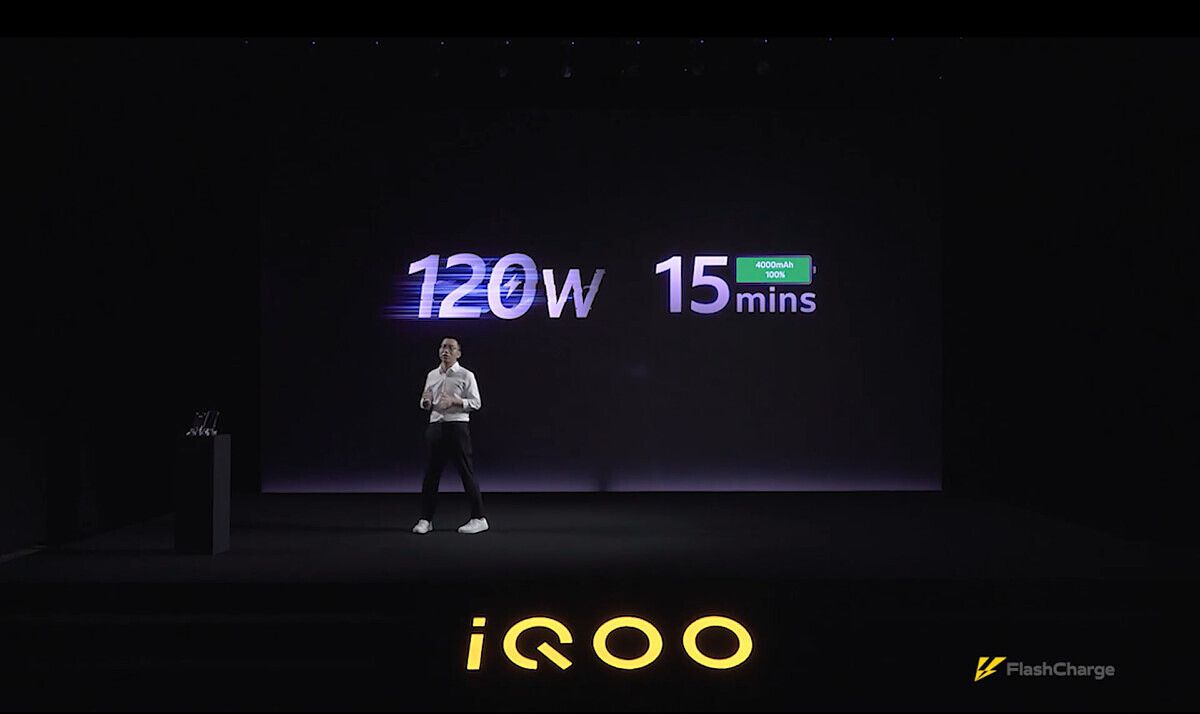In the past few years, the focus for smartphones has slowly shifted towards sufficiently large batteries and faster-than-ever charging. And it makes sense -- as we push for power-hungry technologies like 5G and high refresh rate high-resolution displays, we need to ensure that our phones last in our hands for a few hours at least. Companies are now exploring faster charging technologies. Last year, we saw Xiaomi demo its 100W Super Charge Turbo technology that charged from 0-100% in 17 mins. While the tech hasn't made its way to Xiaomi devices just yet, we are now seeing other manufacturers also work on super-fast charging technology. In an online event for the Chinese market, Vivo's sub-brand iQOO has now shown off its 120W fast charging solution, and it appears to be based on Vivo's Super FlashCharge implementation.
Through a Weibo announcement, iQOO demoed its latest 120W FlashCharge fast charging solution. iQOO's solution works by pushing forth 20V x 6A for a total of 120W of power. The technology makes use of dual-cell battery designs, as most super-fast charging technologies do, as well as a proprietary charging brick. This lets iQOO's FlashCharge 120W power a dead phone to 50% within a staggering 5 minutes and then flattening the charging curve to achieve 100% charge on a 4000mAh battery in just 15 minutes.
In comparison, Xiaomi's 100W charging tech reached 39% in 5 minutes and 100% in 17 minutes in the demo from last year. While this objectively makes Xiaomi's demoed tech "inferior", the differences become minor at this stage and a consumer is unlikely to notice the difference between the two in his everyday life. The conversation would then need to shift to safety and battery longevity, and these are the reasons why we haven't yet seen these superfast charging technologies in the hands of consumers just yet.
iQOO may have addressed the safety and longevity aspects in their demo, but due to language translation constraints, we are unable to properly ascertain the same. iQOO's announcement post also hints at a launch in August, which implies that they just might have cracked the code on this one.
Source: Weibo


